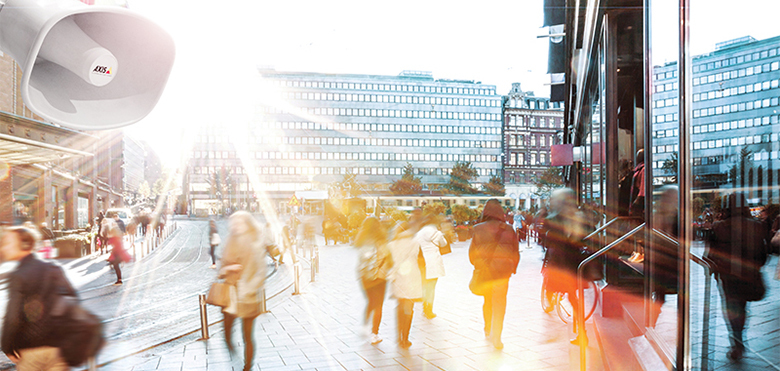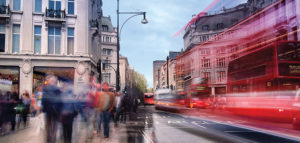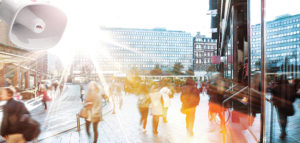4 ways that audio solutions can contribute to a smarter and safer city
Discussions around safety and security in smart cities often focus heavily on the visual. This is not unreasonable; cameras are crucially important to any effective security system and with advances in camera technology, they are better than ever.
But the value of audio should not be overlooked, and can be used as a valuable complement and even an alternative to cameras or other IoT sensors in cities. Indeed, audio technologies are capable of tackling certain issues in ways which visual sensors simply cannot by themselves.
Selecting a modern connected audio system can ensure that the important communication takes place at the right time, in the right place and with the sound quality needed to keep citizens safe and secure. Emerging audio technologies can also help smart cities flexibly tackle issues which are having a direct and detrimental effect on citizen wellbeing.
Here are four principal scenarios when audio solutions can contribute to a smarter and safer city:
1. Emergency notifications
Each year, many cities across the globe are exposed to emergency situations, such as natural disasters and severe weather. In such situations it is important to inform citizens as soon as possible and guide them in order to keep people safe. With network speakers it is possible to reach people in selected zones quickly and effectively.
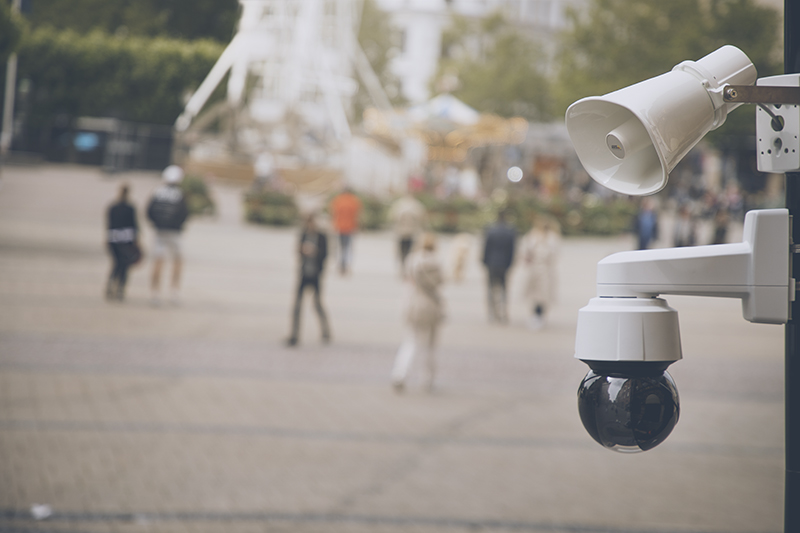
The audio announcement systems are often installed to prepare cities for emergency situations. In the case that something happens, it is crucial to have a reliable and working system. By using high quality network cameras or other sensors with onboard analytics and speakers to detect emergencies and dispatch warnings, lives can be saved.
The system can be set up to play a warning signal, a pre-recorded message as soon as an alert is triggered or a warning is received by the operator, allowing the most possible time for people to respond to the issue. These messages could provide guidance for evacuation, traffic incident instructions, missing child notifications or extreme weather warnings.
Solutions like this have been used all across the world, for example in the city of Concón in Chile. As the citizens are facing the constant threat of earthquakes and tsunamis along the coast, which occur on a frequent basis, having a network audio solution installed is a key element to keep people safe. It helps Concón’s authorities to manage emergency evacuations quickly and efficiently.
Cities in Mexico face similar challenges, especially cities located near the Pacific fault line, which is an area that has historically faced catastrophic earthquakes. Mexico City implemented a similar system consisting of over 10,000 AXIS network speakers to deliver a pre-recorded evacuation notification during severe earthquakes within 30 seconds of a crisis occurring. This technology has undoubtedly saved lives and will continue to do so. As will likely be said many times in this post, more information can be found in the audio for smart cities eBook linked at the end of this blog.
2. Non-emergency messaging
Perhaps of more use on a daily basis are non-emergency messaging solutions. Mobility guidance, safety and behavior guidelines, information during events for tourists, or even just background music. They can be further expanded to help handle parking violations – if a vehicle park at a restricted area a warning can be issued over the speakers. This has the added benefit of reducing the burden on law enforcement caused by accidental parking violations.
In another example, the Municipality of Vicente Lopez in Argentina has implemented a network audio system that allows it to easily communicate with its citizens. Implemented on its main exterior coastal walk, they are able to provide weather alerts, sun exposure warnings, and more recently Covid-19 messages regarding social distancing and mask usage. This audio solution helps create a much better outdoor experience for visitors, and optimizes their safety. More about this can be read in the audio for smart cities eBook linked at the end of this post.
By no means an exhaustive list, the potential applications for are practically limitless. And thanks to the flexibility of these kinds of systems, the specific style of the messaging can be altered based on the user’s needs – whether that be live, pre-recorded, scheduled or something else. These speakers are able to give a voice to IoT sensors, whether this be temperature/pressure sensors in more critical emergency environments, or just informing an operator of anomalies or developing situations in a more friendly way, speakers are the solution.
3. Crime prevention and deterrence
Deploying limited resources to keep a city safe is a common challenge in cities all over the world. A lot of cities are working with a surveillance system to monitor the city and manage law enforcement resources in the most efficient way. With video, crimes such as intrusion into buildings or restricted areas can be detected, but in many cases police or guards will not reach the location in time to prevent theft or vandalism.
By implementing video surveillance in combination with an audio solution, the camera can prompt an automated audio warning to the intruder or alert an operator to give a live warning directly to the intruder using the audio system. In many cases, this type of warning is sufficient, preventing the need for additional security measures as the criminals get deterred.
4. Sound detection and noise pollution
While the last three solutions focused on ‘audio out’ methods, this area is more ‘audio in’- a distinct difference. Many security incidents in a city are preceded or initiated by some kind of noise, for example aggressive behavior and raised voices, gunshots or breaking glass. Today’s solutions can automatically detect and recognize pre-defined sounds and send alerts for potential and real incidents as they occur.
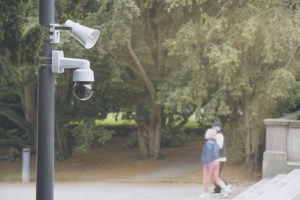
Surveillance cameras in combination with sound detection sensors can add great value to security systems covering public spaces, like a park or square. The combination of sound and video can be a powerful solution to both detect and verify a situation, and enable quick, relevant action to minimize the consequences. For example, when there are loud voices heard in a park, the system could detect the shouting and activate the networked cameras for operators to verify if it’s just kids playing, or an attempted mugging. If it is a mugging, security guards can be sent or the operator can be enabled to speak live to the scene as we covered when discussing crime deterrence.
Sound detection solutions can also be used to tackle the often-underestimated issue of noise pollution in smart cities. With over 1.6 million healthy life years being lost each year in Europe alone, it’s difficult to overstate the necessity of proper monitoring of the issue. Using robust sound detection solutions could allow smart cities not only to monitor noise levels in specific locations, but also track and analyze the sources of those noises. Gathering this information allows operators to then formulate a plan to reduce the noise, such as optimizing signage or traffic lights in busy intersections to improve the distribution of the traffic flow.
Audio as a complement to video security
The safety and security of citizens is often highlighted as one of the most important aspects of livability in a modern city. With authorities increasingly looking to use connected technology to improve their cities, it is a combination of different sensors and devices that offer the maximum potential, and audio can play a central role. With the incredible flexibility of audio solutions in their ability to respond to problems, and their usefulness in such a wide variety of scenarios, it’s clear that these kinds of solutions will be at the heart of Smart Cities for years to come.
Read more about network audio solutions for smart cities and download our Audio for Smart Cities Ebook.

